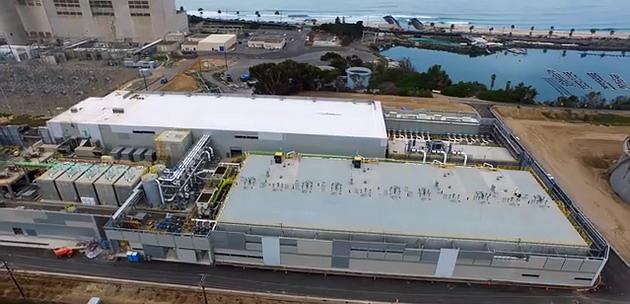- Ms Word Format
- 1 Pages
- 1-5 Chapters
The world’s largest seawater desalination plant powered by the Sun to be built in Morocco
Keywords: Morocco, seawater, seawater desalination plant will generate, Morocco, desalination plant, plant powered, largest seawater desalination plant powered
The world’s largest seawater desalination plant powered by the Sun to be built in Morocco

Noor Ouarzazate solar energy plant will power the seawater desalination plant in Agadir.
The Spanish company Abengoa has signed an agreement with the Moroccan government agency to initiate the first phase of the project to build the world’s largest seawater desalination plant powered by solar energy.Abengoa will ensure the engineering, construction, operation and maintenance service for the plant for a period of 27 years.
The world’s largest seawater desalination plant will generate 275,000 cubic meters (m3) of desalinated seawater every day, of which 150,000 cubic meters will be drinking water, and 125,000 cubic meters will be irrigation water for a farmland (13,600 hectares) located near Agadir (a coastal town from western Morocco).
The contract also provides the possibility to increase the capacity of producing desalinated water up to 450,000 cubic meters per day.

Carlsbad Desalination Plant represents a new water supply for the San Diego region.
The solar power plant that will power the desalination plant with clean energy is called Noor Ouarzazate and is located 249 miles (400 km) east of Agadir.
Today, less than 1% of the world’s population depends on desalinated seawater for daily consumption, and there are around 21,000 large desalination plants in operation in the world, most of them being located in the Middle East.
The seawater desalination plant in Morocco will draw water from the ocean, and will turn it into drinkable water.
The potential to produce drinkable water from seawater is enormous because 97.5% of the 1,385 million cubic kilometers of water on the planet are represented by salty seawater.
Fresh water is only the remaining 2.5%, but the problem is that 90% of this water is locked in the ice caps and glaciers in Antarctica, Greenland and other cold places of the planet.
Scientists are considering that such desalination plants used to turn seawater into drinkable watercan even be used to turn the world’s deserts and semi-arid areas into green plantations thriving of life.
In theory could work, but in real life, turning seawater into drinkable water is an expensive process because it requires expensive technology and a lot of energy.
On average, a person uses about 3.8 cubic meters of water every day (from washing and drinking through agriculture and water used in the industry), and once finished, Abengoa’s Agadir seawater desalination plant will generate enough drinkable water to cover the needs of about 72,500 people in Agadir (counted as average global citizens).
Giving the fact that today we are about 7.5 billion people on the planet, we would need about 104,000 seawater desalination plants (similar to the one built by Abengoa in Agadir) to supply the entire population with drinkable water.
